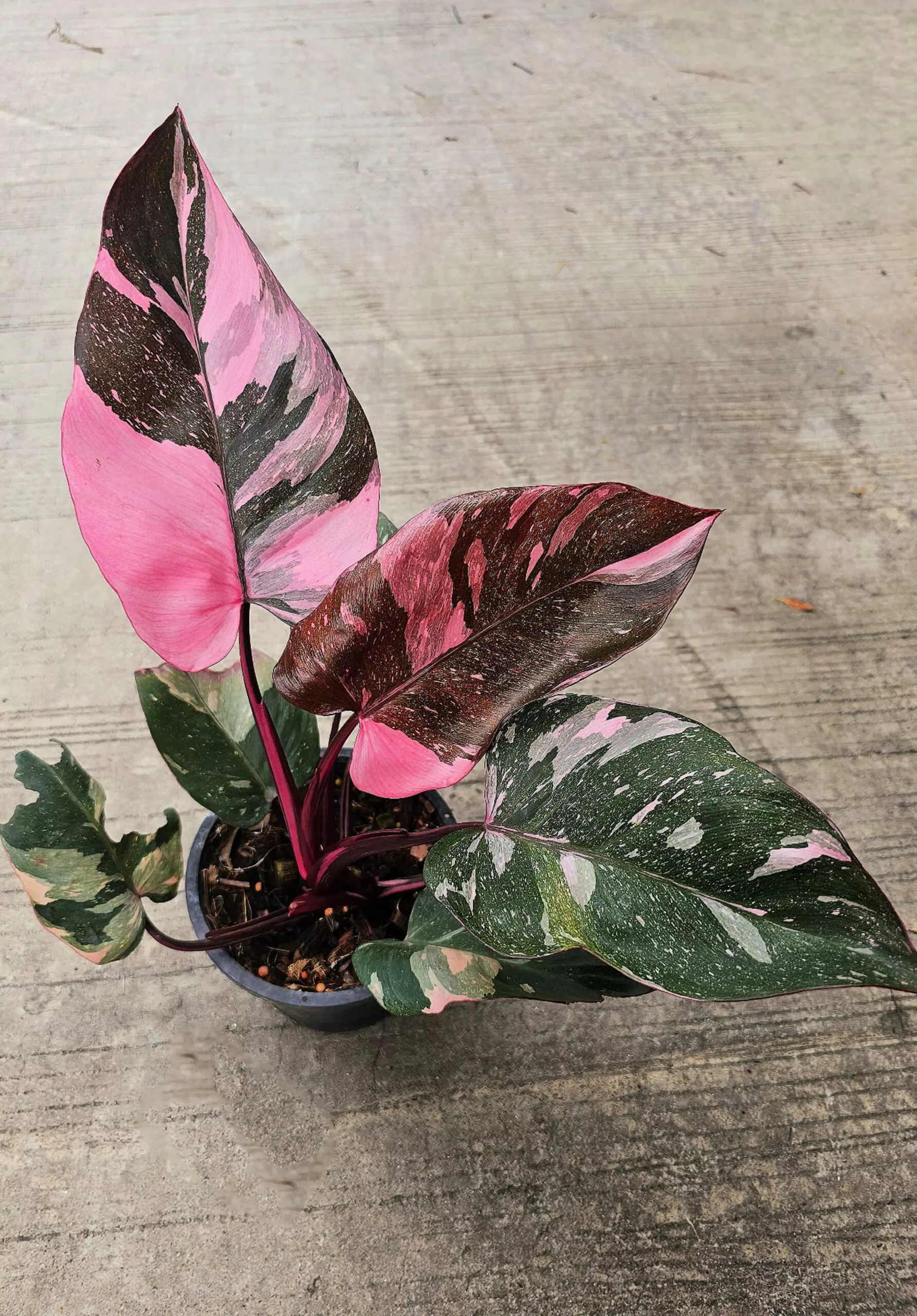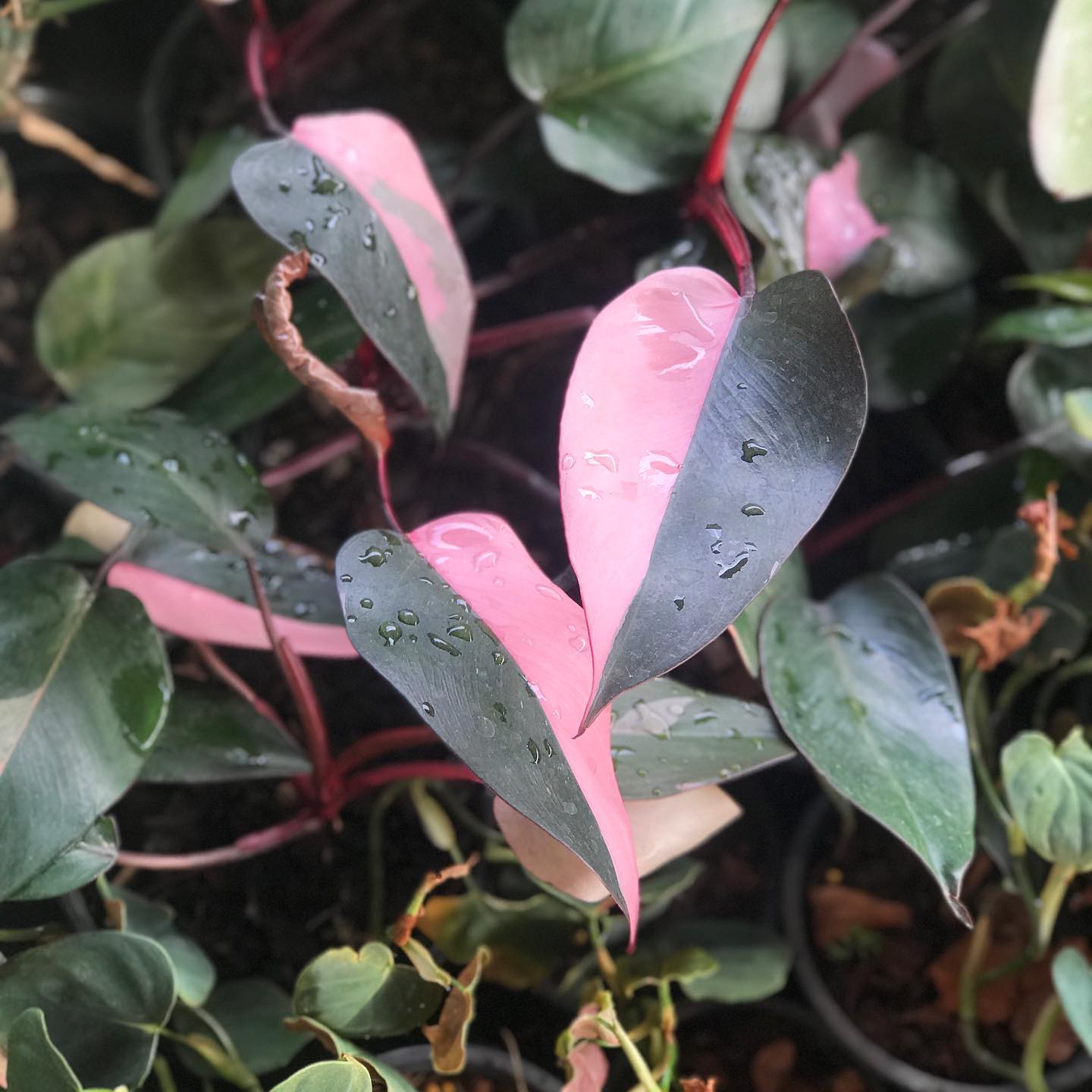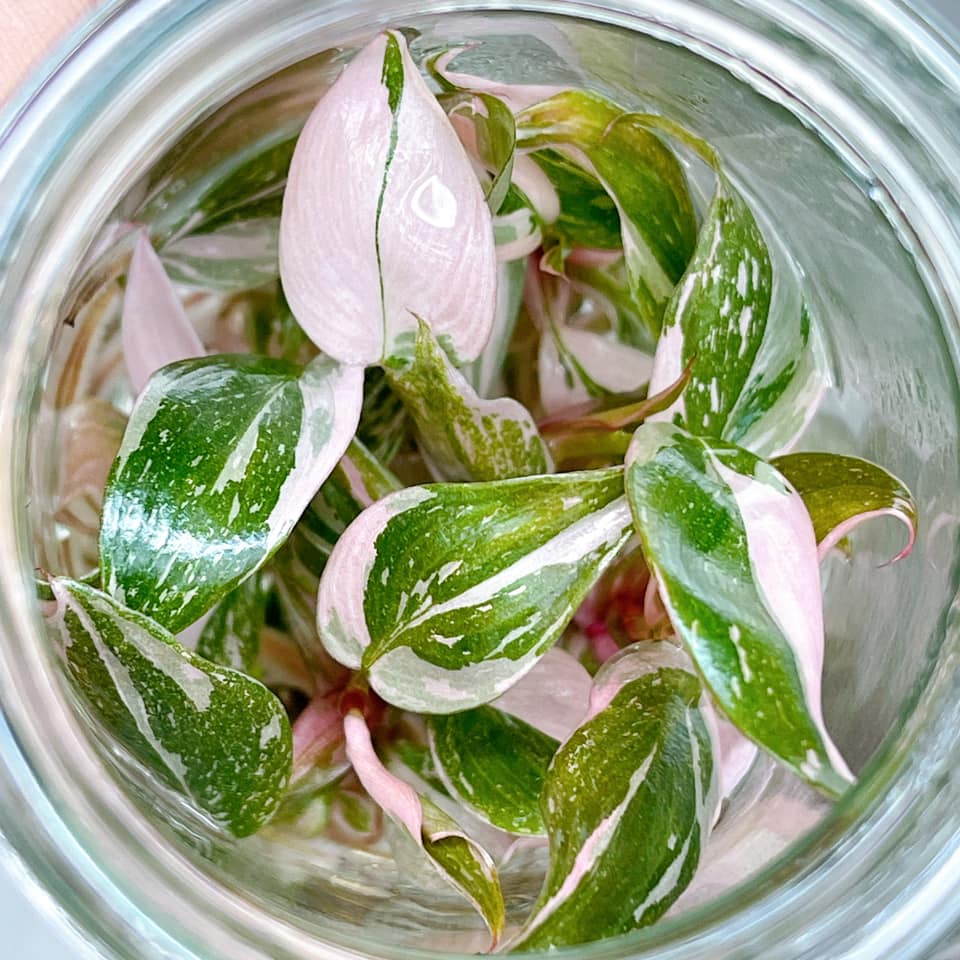Unlock 4 Secrets to Growing a Perfect Pink Princess Philodendron
Introduction
The pink princess philodendron, also known as philodendron erubescens, is a stunning tropical plant known for its oval shaped leaves that emerge as a solid green/red but then variegate to a burgundy/neon pink as it matures. This slow growing vining plant is not only gorgeous but also purifies the air by removing toxins.
While pink princess philodendrons are irresistible, they can be difficult to find and keep alive. They need very specific growing conditions to thrive and show off their beautiful variegated foliage. Follow these essential tips to help your pink princess succeed.

Philodendron Pink Princess Marble
Characteristics
Appearance
- Leaves are initially solid burgundy/red when young but then variegate to pink/neon green as the plant matures
- Heart shaped leaves grow up to 10 inches long
- Stems and leaf undersides are a deep red/burgundy color
- Leaf patterns are unique to each plant. No two are exactly alike.
Growth habit
- Hardy tropical plant native to South American rainforests
- Climbing epiphyte vine in the wild. Grows as a houseplant vine when cultivated indoors.
- Considered a slow growing plant but can reach up to 4 feet tall with proper care
- Does best when provided with a moss pole, trellis or other support to climb
Caring for Pink Princess
Proper care is critical to maintain the pink princess' exquisite foliage long term. Follow these growing conditions to keep your plant healthy.
Light
Pink princess philodendrons need bright, indirect sunlight to thrive. Place in an East facing window where it will get 4-6 hours of morning sun. West facing windows are also suitable. Avoid direct southern sun which can burn leaves. For more insights into the perfect lighting conditions for your Philodendron, check out the helpful video guides
Rotate the plant occasionally so all sides get adequate light exposure. Use sheer curtains to filter harsh afternoon sun rays. Move outdoors in summer to a shaded area.
If light is too low, leaves will fade to solid green. Ensure ample sunlight to encourage variegation.
Water
Water when the top few inches of soil become dry, as detailed in our extensive care guide, Check by sticking your finger in the pot. Overwatering causes leaf spotting so allow the soil to partially dry out between waterings.
Increase water slightly in summer months. In winter, reduce watering to once every 7-10 days. The thicker leaves can store water so take care not to over-saturate the soil.
Water with room temperature filtered water or rainwater, never cold tap water. Pour water until it runs from the drainage holes to flush out salts. Allow excess water to drain fully.
Humidity
Maintain high humidity around your pink princess philodendron. These tropical plants thrive in 60% - 80% relative humidity.
Run a humidifier nearby to increase moisture levels. Place the pot atop a tray filled with pebbles and water to create a humidity tray. Mist leaves occasionally with room temperature water.
Group other houseplants together to boost ambient humidity. Avoid cold drafts and heating vents which dry the air.
Temperature
The pink princess enjoys average room temperatures between 65°F - 80°F during the day and above 60°F at night. Avoid excessive heat or cold.
Soil
Use a well-draining potting mix, not regular garden soil which stays too wet. Add perlite, orchid bark or coco coir to improve drainage.
Re-pot every 2 years in spring, moving up just 1 size. Never use a pot more than 2 inches larger as philodendrons dislike oversized containers.
Fertilizer
Feed monthly in spring and summer with a balanced liquid fertilizer diluted to half strength. Cease fertilizing in fall and winter months.
Never use full strength fertilizer as it can damage the roots. Rinse any buildup from leaves to avoid burning.
Support
As a climbing vine in nature, pink princess philodendrons benefit from support to grow upwards. Provide a moss pole, trellis or other structure for the stems to attach to via aerial roots.
Slowly train stems onto the support using soft plant ties or velcro. Don't force stems as they are fragile. Place near a window so the support won't block light.
Pruning
Prune off any dead or damaged leaves and stems as needed to maintain its appearance. Sterilize pruning shears with alcohol first.
Pinch back long, leggy stems to encourage bushier growth. Pruning regularly will make the plant fuller. direct sunlight.
Propagate cuttings in water or soil to create more pink princess plants. Take 4-6 inch tip cuttings below a node.

"Click to embrace the elegance of nature with the Pink Princess Philodendron! Add a touch of royal beauty to your space today."
Where to buy Pink Princess Philodendron? Benefits from importing plants from Thailand
Shipping: Door to door shipping, fast and safe with Dragon Courier
Biodiversity: Thailand is known for its rich biodiversity, including a wide variety of aroid species. This diversity allows importers to access a broad range of unique and exotic aroid plants.
Quality and Health of Plants: The suitable climate helps the plants grown here stay healthy and of high quality.
Cost-Effectiveness: Due to favorable growing conditions and efficient production methods, Thai aroid plants can often be more cost-effective compared to those from other countries.
Access to Hybrid Varieties: Thai growers are often involved in the development of new hybrid aroid varieties, offering unique plants that may not be available from other sources.
Philodendron species are the most sought after by aroid plant lovers
Common Issues and Solutions
While pink princess philodendrons are not difficult plants, there are a few potential problems to be aware of.
Drooping Leaves
If leaves start to droop or wilt, it generally signals underwatering. Check soil moisture and water if the top few inches are dry. Make sure the plant is not constantly soggy either.
Yellow Leaves
Yellowing leaves usually indicate overwatering or insufficient drainage. Allow soil to partially dry out before watering again. Add amendments like perlite to improve drainage. Remove any saturated or rotting roots.
Brown Leaf Spots
Small brown spots on the leaves can be caused by too much direct sun, overwatering, low humidity or chemical buildup from tap water and fertilizer. Filter water, increase humidity and avoid hot direct light to prevent.
Leaf Drop
Significant leaf drop can result from temperature stress, low humidity or transplant shock. Gradually acclimate to any environment changes and maintain consistent humid conditions.
Leggy Growth
If stems become long and leggy with sparse leaves, it means inadequate sunlight. Rotate plant to ensure even light exposure. Prune back overly long stems and move to a brighter location.
Fading Variegation
When pink portions fade to solid green, the plant needs more light. Pink princess needs very bright, indirect light to maintain its variegation long term. Increase sunlight exposure.

Philodendron Pink princess tissue culture
Conclusion
With its candy pink leaves and low maintenance care, the pink princess philodendron is one of the most coveted indoor plants available. Although not the easiest plant, give this beauty the proper care outlined here and your pink princess will flourish. Follow these tips to unlock the secrets of growing perfect, vibrant variegation. Enjoy this gorgeous, air purifying plant in your home for years to come.
FAQs
How do you make a pink princess philodendron produce pink leaves?
- Ensure bright, indirect sunlight about 4-6 hours daily. Pink color develops best in bright light. Rotate plant to prevent one side from fading.
- Maintain warm temperatures between 65°F - 80°F
- Keep humidity high around the plant, ideally 60% - 80% relative humidity.
- Use a sterile, well-draining potting mix. Avoid soil that stays wet.
- Provide a moss pole or trellis for support as it matures into a vining plant.
Why are my pink princess leaves turning green?
If pink leaves start fading to solid green, it means the plant needs more bright, indirect light. Place in an east facing window or supplement with a grow light. Lack of light causes loss of variegation.
How do I make my philodendron pink princess full?
Prune back leggy stems to encourage bushy regrowth. Pinching off stem tips triggers branching lower on the stem. Provide a support structure for the vine to climb upwards. Group other plants nearby to increase humidity which benefits growth.
Why are the leaves on my pink princess philodendron turning yellow?
Yellowing leaves usually signals overwatering. Check that the soil is not staying too wet for too long. Allow more time between waterings for excess moisture to evaporate. Add amendments like perlite to improve drainage. Remove any rotting roots.
https://bit.ly/3uZOL3f
Nhận xét
Đăng nhận xét